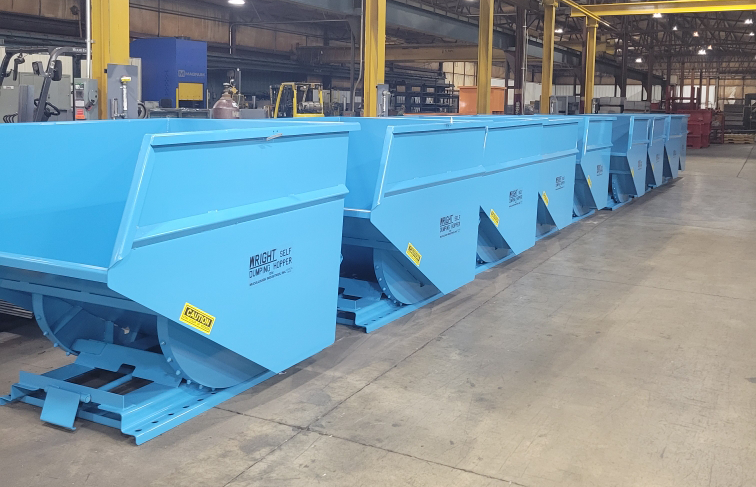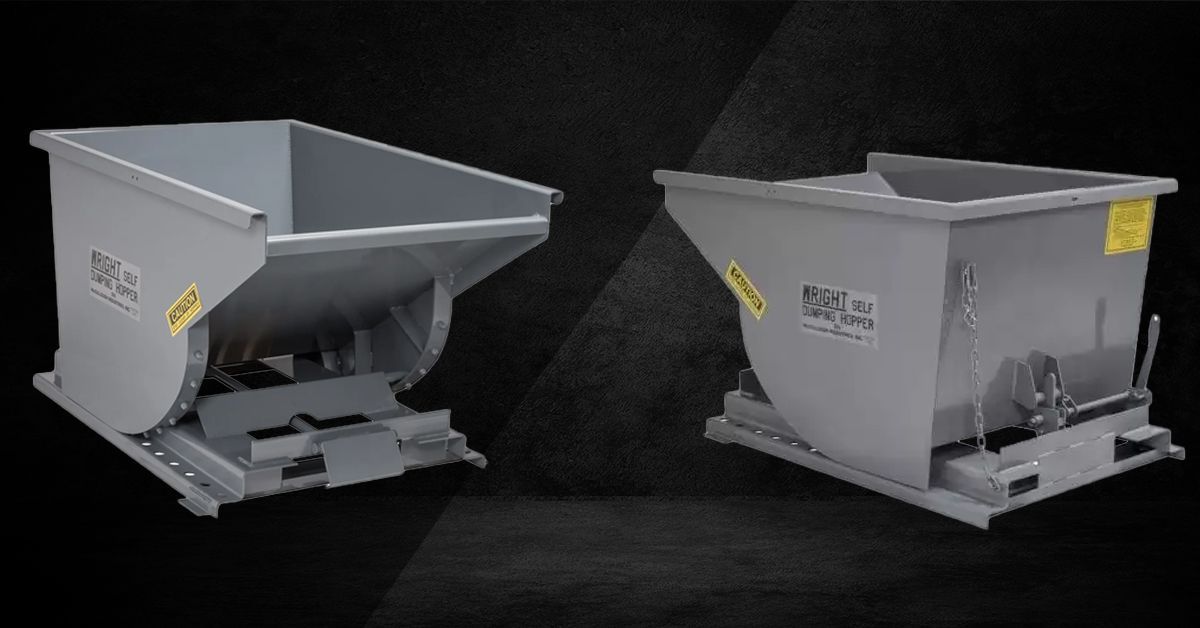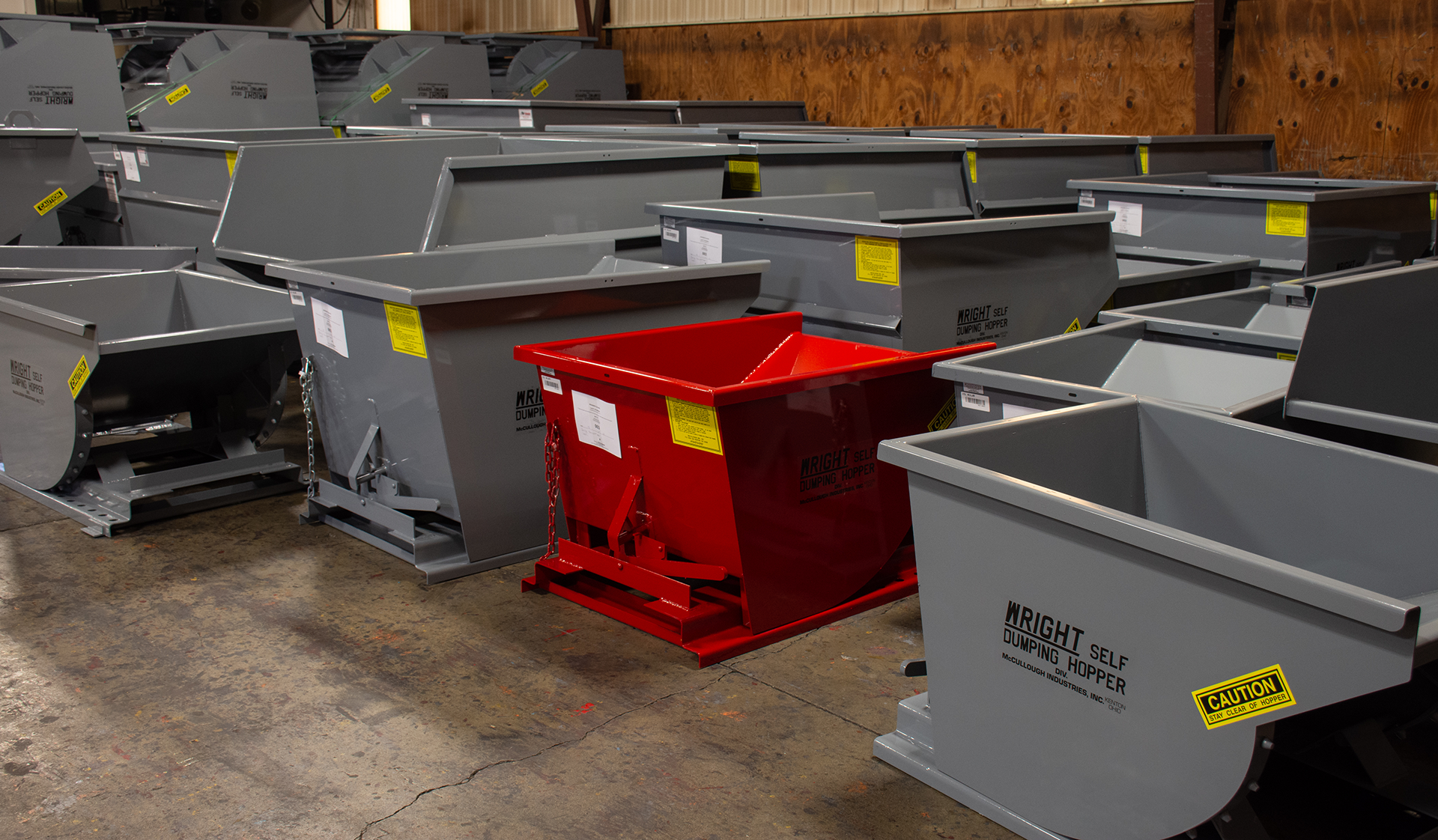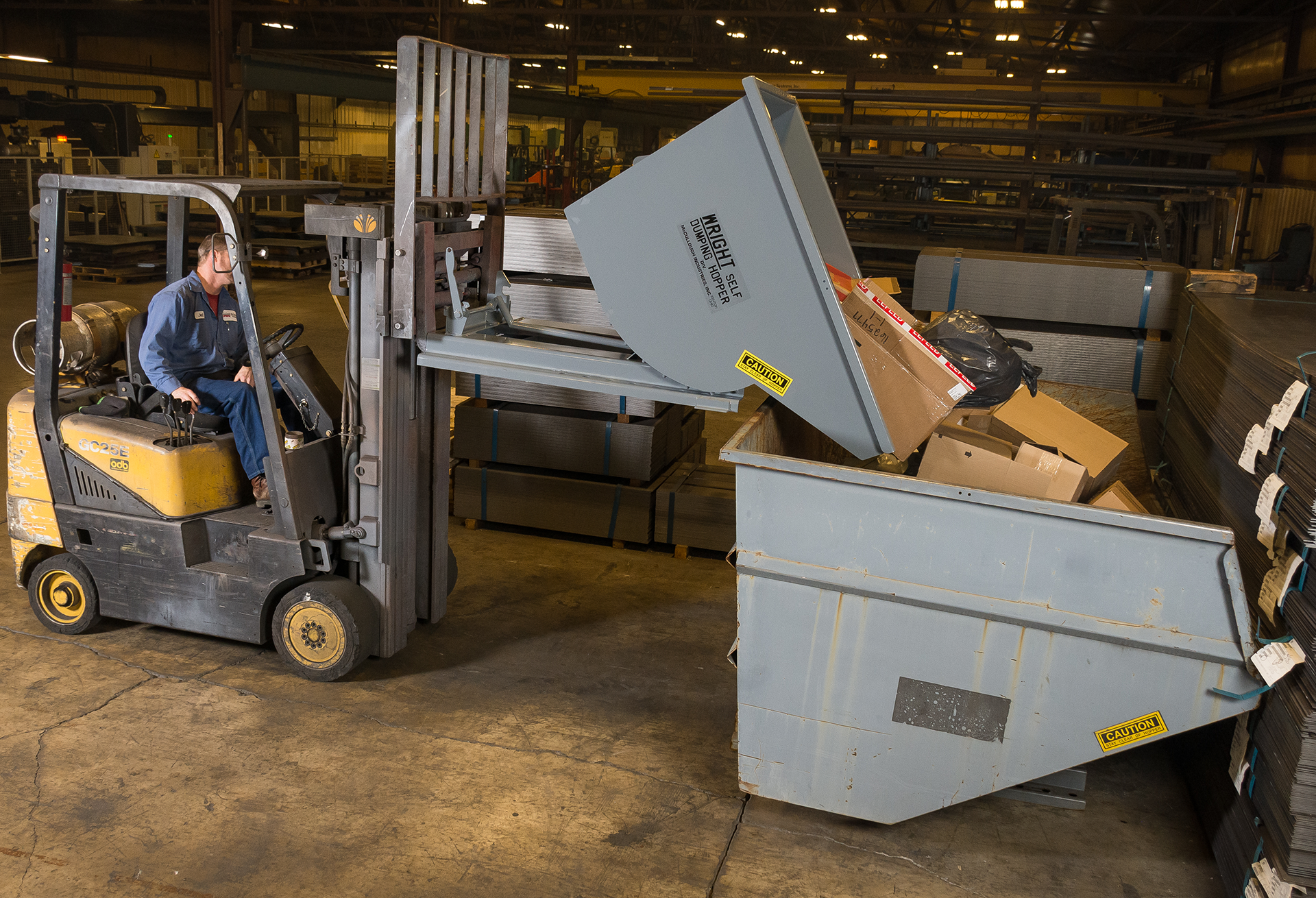
In industrial environments where reliability and strength are critical, the term "heavy duty" carries more than marketing weight. For material handling operations that move dense, abrasive, or high-volume materials, choosing a truly heavy-duty self-dumping hopper can impact everything from worker safety to equipment longevity.
At McCullough Industries, we engineer self-dumping hoppers that meet the demands of real-world use. But what actually makes a hopper "heavy duty"? In this blog, we break down the specifications, materials, and features that define durability in the field and how to choose the right model for your operation.
Understanding the Role of Heavy-Duty Hoppers
Heavy-duty hoppers are designed to handle the types of loads that standard equipment might not survive. These loads include dense metal scraps, bulk debris, jagged materials, and items with irregular shapes or high impact potential. More than just volume, these applications test the strength of the steel, the weld integrity, and the base construction of every hopper.
The wrong hopper in these conditions can deform, leak, or become unstable creating risks for both personnel and property. That's why it's important to understand how a heavy-duty hopper differs in construction and capacity.
Key Indicators of a Heavy Duty Hopper
Several structural components determine whether a hopper can handle heavy-duty use. Below are the core specifications McCullough Industries uses when manufacturing hoppers for tough applications:
| Specification | Why It Matters |
|---|---|
| Steel Gauge | Thicker steel (7 gauge or 1/4" base) resists warping under heavy loads |
| Weld Quality | Continuous welding ensures leak resistance and structural integrity |
| Base Construction | Reinforced bases support higher weight without flexing or shifting |
| Weight Rating | Models rated for up to 7,000 lbs withstand dense and uneven materials |
| Center of Gravity | Lower centers prevent tipping during transport or dumping |
| Edge Design | Formed lips add rigidity and reduce spillover |
| Fork Pocket Design | Reinforced pockets maintain safety under full load |
These components all contribute to a hopper's ability to withstand punishment and remain safe, stable, and reliable over time.
Materials and Build Quality
McCullough Industries builds all of its heavy-duty hoppers using high-strength steel with customizable wall and base gauges. For our most rugged models, 7-gauge wall construction and a 1/4-inch steel base provide unmatched durability.
All welds are continuous, not spot-welded, to prevent seam failure and leaks. This is especially important in facilities handling wet or abrasive materials that could otherwise escape or cause damage. Edge forming techniques and reinforced dump mechanisms also increase the structural strength of each unit.
Paint and coating options further enhance hopper lifespan, especially in environments exposed to moisture, chemicals, or outdoor conditions.
Why Load Ratings Aren't Enough
While load capacity (in pounds) is a useful metric, it doesn't tell the whole story. A hopper rated for 4,000 lbs may hold that weight but for how long, and under what conditions? If the material is dense, jagged, or unevenly distributed, the stress on seams, base plates, and fork pockets increases substantially.
True heavy-duty hoppers aren't just about how much they hold—they're about how well they hold up over years of abuse. That's why it's essential to pair a weight rating with a closer look at the construction standards behind it.
Applications That Demand Heavy-Duty Hoppers
Heavy-duty hoppers are not one-size-fits-all. They're made for environments that push equipment to the limit. Common applications include:
- Metal scrap yards with high-impact drop loads
- Recycling facilities handling dense, varied debris
- Fabrication shops collecting thick metal offcuts
- Demolition sites disposing of concrete, brick, or waste
- Utility plants managing irregular material or extreme heat exposure
These use cases benefit from the strength, predictability, and stability of reinforced hoppers designed for repeat abuse.
Heavy-Duty Doesn’t Mean Immobile
A common misconception is that strength means lack of flexibility. In fact, McCullough’s heavy-duty models are built to be as mobile and user-friendly as they are strong. We offer models with caster options, forklift compatibility, bump release mechanisms, and quick attach designs—all rated for industrial strength without sacrificing movement or accessibility.
This allows teams to maintain agility on the job site, even when working with the heaviest and most challenging materials.
Customization Options to Meet Specific Loads
Heavy-duty needs vary. That's why McCullough Industries offers customization for:
- Wall and base thickness
- Fork pocket spacing and reinforcement
- Dump mechanisms (manual, bump release, quick attach)
- Lid options for debris containment
- Coatings for rust, chemical, or heat resistance
These upgrades ensure that the hopper matches not only your volume, but your material type, site layout, and usage frequency.
Choosing the Right Model for Long Term ROI
When selecting a heavy-duty hopper, focus on more than just cost. The right build can prevent downtime, protect your equipment fleet, and reduce injuries. It may cost more up front to add gauge thickness or reinforced bases, but these investments often pay for themselves in avoided repairs and extended lifecycle.
McCullough Industries will work with you to understand your material characteristics, load cycles, and site hazards to ensure you get the right model for the job not just today, but five years down the line.
McCullough Industries: Built for the Toughest Jobs
We know what industrial operations need because we’ve been building for them for more than 60 years. McCullough heavy-duty hoppers are trusted across industries that can’t afford failure. Whether you need a solution for high-impact scrap collection, extreme environments, or consistent overloading, we have a model built for the challenge.
Contact our team today to discuss your heavy-duty requirements and learn more about models that deliver real strength where it counts.







